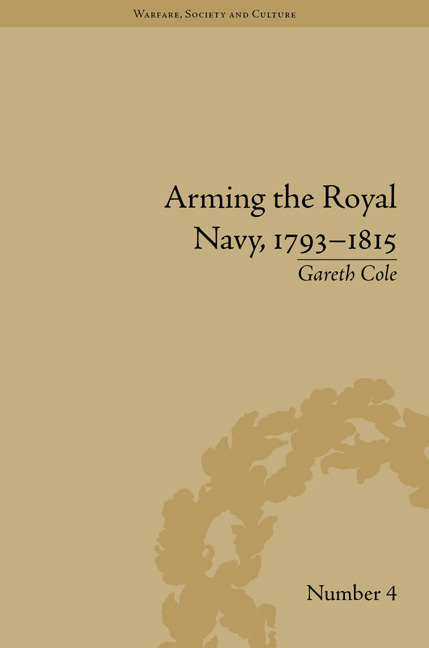Book contents
- Frontmatter
- CONTENTS
- Acknowledgements
- List of Figures and Tables
- Introduction
- 1 The Office of Ordnance and Its Mode of Operation
- 2 Ordnance Relationships with Other Government Departments
- 3 Relations between the Ordnance and Its Contractors
- 4 The Supply of Gunpowder to the Royal Navy
- 5 The Supply of Iron Ordnance to the Royal Navy
- 6 Ordnance Shipping
- 7 The Operations of the Ordnance Outports
- Conclusion
- Notes
- Works Cited
- Index
Conclusion
- Frontmatter
- CONTENTS
- Acknowledgements
- List of Figures and Tables
- Introduction
- 1 The Office of Ordnance and Its Mode of Operation
- 2 Ordnance Relationships with Other Government Departments
- 3 Relations between the Ordnance and Its Contractors
- 4 The Supply of Gunpowder to the Royal Navy
- 5 The Supply of Iron Ordnance to the Royal Navy
- 6 Ordnance Shipping
- 7 The Operations of the Ordnance Outports
- Conclusion
- Notes
- Works Cited
- Index
Summary
When Nelson, Howe, St Vincent, Duncan and the other numerous British Officers won their victories at sea in the Great Wars they did so because the Royal Navy was an effective fighting force. Whether in fleets, squadrons or as single ships, the navy gained a reputation and confidence for fighting that it in many ways retains to this day. The quality of the ships themselves and of the officers and men were essential for the success.
Both ships and men needed support to be able to maintain the scale of operations that secured victory over the French and their allies. Ships needed dockyards to repair and refit; men needed feeding; commanders needed to know their orders and what was expected of them. All of these factors came under the control of the Admiralty Board and its subordinate boards. One area where the Admiralty and naval hierarchy, in general, had no responsibility was in the arming of their ships. Without an effective and coordinated supply of arms the navy's warships would have been toothless tigers.
By 1812 the navy was larger than it had been at any time previously in its history. Each of these vessels had to be armed and stored by the Office of Ordnance. This book has explored the role that the Office of Ordnance played in supplying the navy.
- Type
- Chapter
- Information
- Arming the Royal Navy, 1793–1815The Office of Ordnance and the State, pp. 141 - 146Publisher: Pickering & ChattoFirst published in: 2014



